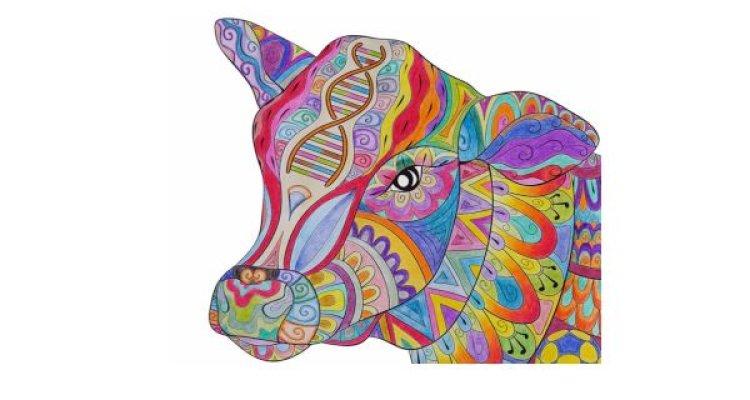
News
New insights in cattle genetic diversity
On Friday the 18th of September 2020, Harmen Doekes will defend his PhD thesis at Wageningen University & Research, entitled “Genomic characterization and conservation of genetic diversity in cattle”.
In his thesis, Harmen Doekes utilized genomic data to characterize and conserve genetic diversity in Dutch cattle, both in in situ populations and ex situ gene bank collections. Results showed, among others, that
- genetic diversity trends reflect changes in a breeding program,
- inbreeding is depressing, but not all inbreeding is equally depressing, and
- gene banks are valuable genetic resources for future breeding.
Genetic diversity trends reflect changes in breeding program
Breeding programs change over time. Harmen analysed DNA information of Dutch Holstein-Friesian bulls from three decades of breeding. He showed that past changes in the breeding program are reflected by genetic diversity trends. The rate of inbreeding and loss of diversity decreased when the breeding goal was broadened around 2000 with the inclusion of non-production traits. The recent introduction of genomic selection, which has accelerated genetic improvement, has been accompanied by an increase in the rates of inbreeding and loss of diversity.
Inbreeding is depressing, but not all inbreeding is equally depressing
Inbreeding reduces the performance of animals, a phenomenon known as inbreeding depression. Harmen demonstrated inbreeding depression for production, fertility and udder health traits in Holstein-Friesian cows. No major differences in inbreeding depression were found across the genome. However, there was a difference based on the age of inbreeding. Namely, “old inbreeding” (inbreeding on distant ancestors) was found to be less harmful than “recent inbreeding” (inbreeding on recent ancestors). These findings provide insight into how to best breed cattle with regard to genetic merit and inbreeding and diversity.
Gene banks are valuable genetic resources for future breeding
Since the beginning of the 1990s, genetic material (i.e. semen) from bulls of Dutch cattle breeds has been stored in a national gene bank. Harmen showed that the stored material for the Holstein-Friesian breed is valuable for long term conservation of genetic diversity and potentially for future genetic improvement if breeding goals change. It was also shown that the seven Dutch native cattle breeds in the gene bank harbour unique genetic diversity (although there is also overlap between some breeds).
A fruitful collaboration
The thesis is the result of a fruitful collaboration between the Animal Breeding and Genomics group (ABG) of Wageningen University & Research, the Centre for Genetic Resources, the Netherlands (CGN) of Wageningen University & Research, and the Dutch-Flemish cattle improvement cooperative (CRV). The research has been conducted as part of the EU Horizon 2020 funded project “Innovative Management of Animal Genetic Resources (IMAGE)”, and was financially supported by the Dutch Ministry of Agriculture, Nature and Food Quality.